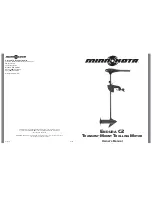
Hardware Installation
________________________________________________________________
________________________________________________________________
17
program developed on XT should be executed with a low speed system, so a
high speed system needs the speed switching function to change its running
speed.
The mainboard uses helf speed method to implement TURBO switching function.
The
JP18
on mainboard should be connected to the TURBO switch on panel,
and user can push in or pop out the TURBO switch to enable or disable the
turbo function of system.
M
If not necessary, please don't use De-turbo mode. (always keep system
in Turbo mode)
3.11. TURBO LED CONNECTOR INSTALLATION
The TURBO LED on panel can indicate the current speed status of system. The
TURBO LED connector should be installed to
JP19
in correct direction.
3.12. HARDWARE RESET SWITCH CONNECTOR INSTALLATION
The RESET switch on panel provides users with HARDWARE RESET function
which is almost the same as power-on/off. The system will do a cold start after
the RESET switch is pushed and released by user. The RESET switch is a 2 PIN
connector and should be installed to
JP16
on mainboard.
3.13. PERIPHERAL DEVICE INSTALLATION
After the device installation and jumpers setup, the mainboard can be mounted
into the case and fixed by screw. To complete the mainboard installation, the
peripheral device could be installed now. The basic system needs a display
interface card and a disk device.
If the PCI - Bus device is to be installed in the system, any one of three PCI -
Bus slots can be used no matter Slave or Master PCI - Bus device being
installed.
After installing the peripheral device, the user should check everything again,
and prepare to power-on the system.
















































